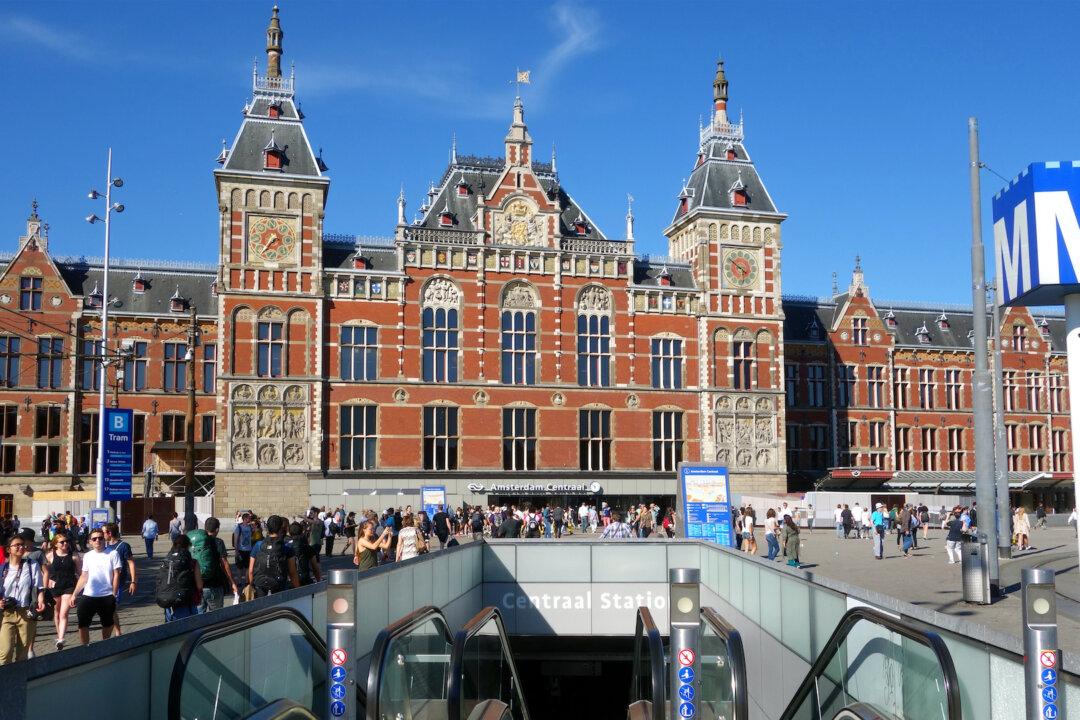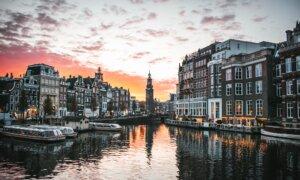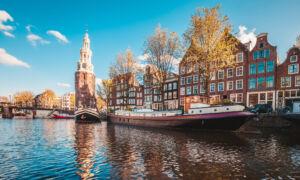I have a little ritual every time I step off the train in big, bold Amsterdam: I look over my shoulder to the lions of the city seal atop Amsterdam Centraal train station. They seem to roar, “Just do it.”
One side of the station faces the harbor. From there, buses come and go, the free shuttle ferries are jammed with bikers, and the Amsterdam-Noord district across the water bustles with construction as if fertilized by the new commuter train line that tunnels under the water to connect it with downtown. And on the city-facing side of the station, trams glide, children pedal to school as if in a small town, and pairs of police add no stress to the laid-back scene.
From here, I look down Damrak, the main drag, which flushes visitors past cheers of commercial neon to the Dam Square, Amsterdam’s main square. It’s always been this way. After all, long before there was a train station, the Amstel River passed through the city here, following the route of today’s bus- and bike-filled Damrak.
In the 17th century, the Dutch golden age, Amsterdam was a fortified marina of 30,000 people—mostly merchants—who welcomed ships loaded with material delights from every corner of the trading world. They'd enter the town from where the train station stands today, parading like pirates with plunder to the commercial altar of the town: the customs and weigh house next to the City Hall on Dam Square, where they docked and unloaded.
Today, Holland’s trade still comes, but to a different port: nearby Rotterdam, one of the biggest ports in the world. The Dutch claim that money is made in Rotterdam (where shirts are sold with sleeves already rolled up), divided in The Hague (a nearby city where the government resides), and spent in Amsterdam.
First-time sightseers leaving the station carry a predictable checklist of sights: the Anne Frank House is on the right, the Red Light District is on the left, and Damrak leads right through the middle toward two great museums. Filled with works by Van Gogh and Rembrandt, the Van Gogh Museum and the Rijksmuseum stand like cultural bulldogs on the opposite side of town.
But I find Amsterdam’s unpredictable street scenes—crass one moment, charming the next—at least as rewarding as the city’s fine museums. I follow the crowds down Damrak. Today, Damrak is about as traditionally Dutch as dancing the chicken. The street hosts a veritable gauntlet of touristy shops that seem to cover every Dutch cliché. I pass wooden shoes, which the Dutch used to wear to get around easily in the marshy soil, and all manner of tulips; the real ones come from Holland’s famed fresh-flower industry. Heineken fridge magnets advertise one of the world’s most popular pilsner beers. There are wheels of cheese, marijuana-leaf hats, team jerseys for the Ajax football (soccer) club, and memorabilia with the city’s “XXX” logo.
Just past a gimmicky torture museum and a funky “coffee shop” (serving coffee, tea, and cannabis), the sound of an old-time barrel organ revives traditional Amsterdam. It’s a two-man affair. While grandpa works the crowd, the boss is in the back spinning the wheel and feeding tunes punched into a scroll as if feeding bullets into a musical machine gun.
The street organ is a mini carnival, painted in candy-colored pastels and peopled with busy figurines. Whittled ballerinas twitch to ring bells while Cracker Jack boys crash silver dollar-sized cymbals. Playing his coin-tin maracas and wearing a carved-on smile, the old man looks like an ornamental statue that has just leapt to life. While shoppers trudge by, two tourists break into a merry waltz. Another hugs a day bag between her knees and snaps a photo.
Nearby, I pick up a cone of Flemish-style fries—covered in mayonnaise, the Flemish choice over ketchup—from a kiosk. I warm my hands around my cone of salty fries and continue to wander. In Amsterdam, cobbled lanes connect a total of more than 1,200 bridges that cross about 60 miles of peaceful green canals. Houses jostle for a canal view. As their foundations of pilings rot or settle, they lean on each other, looking as if someone has stolen their crutches.
The charm of Amsterdam, a fun mix of modern and faded elegance, is best enjoyed by those who get out and explore it on foot (ideally with Flemish fries) or by bike. Take it all in, then pause to watch the sunset and see the golden age reflected in a quiet canal.







